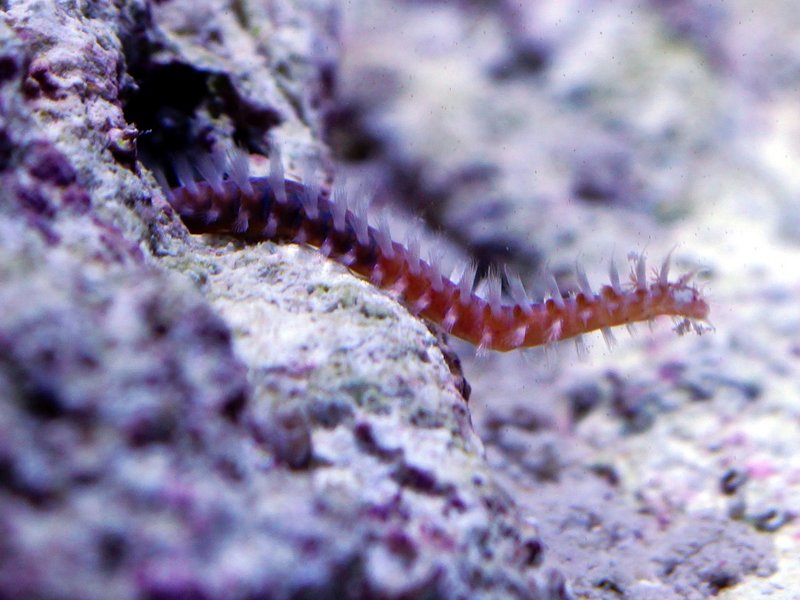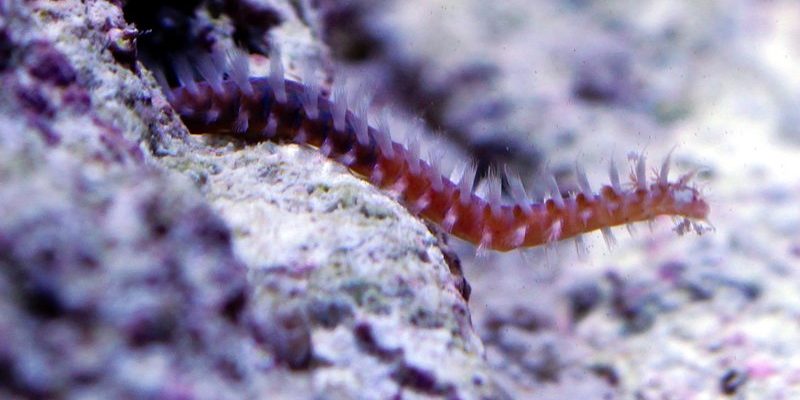
Bristle worms are tiny marine worms that usually find their way into aquariums hitchhiking on live rock, sand, or through contaminated equipment. They might remind you of that uninvited guest who shows up with a buddy. At first glance, they might seem harmless, but it’s essential to understand what they are, how they get in, and what you can do about them. Let’s dive into the ins and outs of these bristly little intruders and see how you can manage an aquarium that’s safe and healthy for your marine life.
What Are Bristle Worms?
Bristle worms, belonging to the class Polychaeta, are segmented worms that can vary in size and color, ranging from a few millimeters to over a foot long. They’ve got distinctive bristles—hence the name—along their bodies that can be quite sharp. These worms are scavengers, which means they feed on leftover food and decaying organic matter. In a way, they serve as nature’s cleanup crew. However, they can become problematic if their population gets out of control.
You might be wondering why these worms are a concern for your precious aquarium. While they help in breaking down waste, an overabundance can lead to excessive detritus, which can affect your water quality. Imagine inviting friends over for dinner only to find they’ve all brought their entire extended family—suddenly, your cozy gathering feels chaotic and overwhelming. That’s what can happen when bristle worms overwhelm your aquarium.
How Bristle Worms Enter Your Aquarium
So, how exactly do bristle worms make their grand entrance? It often starts when you add new live rock, coral, or even sand to your tank. These materials often come with their own little hitchhikers. Just like how a plastic bag can carry unwelcome sand from the beach, new aquarium additions can bring in these worms without you even realizing it.
Here are a few common ways bristle worms may invade:
- Live Rock: Many aquarists use live rock for its beneficial bacteria. Unfortunately, this rock can be a breeding ground for bristle worms.
- Corals and Invertebrates: If you purchase or trade corals, inspect them closely. They might arrive with tiny bristle worms riding along.
- Contaminated Equipment: If you’ve used equipment in another tank or even a different environment, you might inadvertently introduce these worms.
It’s essential to prevent their entry in the first place. A little vigilance when selecting new additions can save you a lot of trouble later on.
Identifying Bristle Worms in Your Aquarium
Recognizing bristle worms in your aquarium is crucial for managing their population. These worms have a distinctive look. They tend to be long, thin, and often have a reddish or brownish hue. You might see them wriggling around during feeding times or when you disturb the substrate. If you catch a glimpse of a little creature with bristles sticking out, there’s a good chance it’s a bristle worm.
But honestly, it’s not always just about seeing them. Sometimes, you might notice their impact before you even lay eyes on them. For instance, if you’re observing uneaten food or detritus piling up in your tank, these worms might be multiplying out of sight. Remember, while a few bristle worms can be beneficial, spotting a large number might mean it’s time to take action!
Why Bristle Worms Matter
You might still be unsure whether bristle worms are worthy of your concern. They do play an essential role in your aquarium’s ecosystem by helping decompose organic waste. However, it’s a real balancing act. Too many of these worms can lead to problems like:
- Poor Water Quality: Their decomposition can lead to increased waste levels, creating harmful spikes in ammonia and nitrites.
- Fish Stress: If your fish are constantly agitated by the worms or their waste, it might lead to increased stress levels.
- Competition: They can outcompete other beneficial organisms for food and space.
Imagine your aquarium as a tiny world, where everyone has a role. If one group gets too big, it throws the whole system off balance. Understanding their role helps you decide whether to embrace or manage their population.
Managing Bristle Worm Populations
If you find yourself with a burgeoning bristle worm population, don’t panic! There are several steps you can take to manage them effectively. It’s all about keeping things in check. Here are some practical tips:
1. **Manual Removal:** If you can see them, you can remove them. Use tweezers to grab them carefully. Just be cautious—those bristles can irritate your skin!
2. **Trap Them:** You can set up simple traps using a piece of shrimp or fish. Place it in the tank at night, and by morning, you might find a few trapped inside.
3. **Adjust Feeding Habits:** Overfeeding is one of the primary reasons for their explosion. Keep feeding to a minimum and ensure your fish eat everything you give them.
4. **Introducing Predators:** Some fish or invertebrates naturally prey on bristle worms. Wrasses and some types of shrimp are known to help keep their numbers in check.
While it might feel daunting at first, remember that managing bristle worms is part of the journey in maintaining a balanced aquarium.
Preventing Bristle Worms in the Future
When it comes to preventing these little invaders from becoming a constant presence in your tank, a few proactive measures can make all the difference. Here’s what you can do to keep them at bay:
– **Inspect New Additions:** Always check new live rock, corals, or any aquatic items before introducing them to your tank. Look for signs of worms, and don’t hesitate to ask the seller about their source.
– **Quarantine New Additions:** Setting up a separate tank for quarantine can help prevent unwelcome guests from entering your main aquarium.
– **Regular Maintenance:** Keeping your tank clean and performing water changes can help maintain a healthy environment. This practice reduces the chances of any one species, including bristle worms, taking over.
By taking these precautionary steps, you can enjoy your aquarium without the worry of uninvited guests.
Bristle worms can be both a blessing and a nuisance in your saltwater aquarium. Understanding how they invade and how to manage them is key to keeping your aquatic environment healthy and balanced. Whether you decide to coexist with these creatures or take steps to control their population, the important thing is that you stay informed and proactive.
Aquarium keeping is all about creating and maintaining a delicate balance. Just like any good relationship, it requires a bit of effort and understanding. With a little care, your aquarium can thrive, free of excessive bristle worms, allowing your fish and coral to flourish. Happy fishkeeping!

